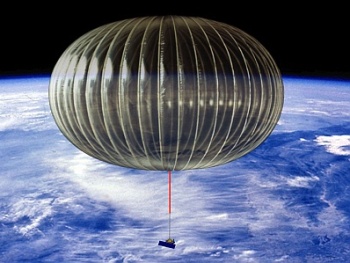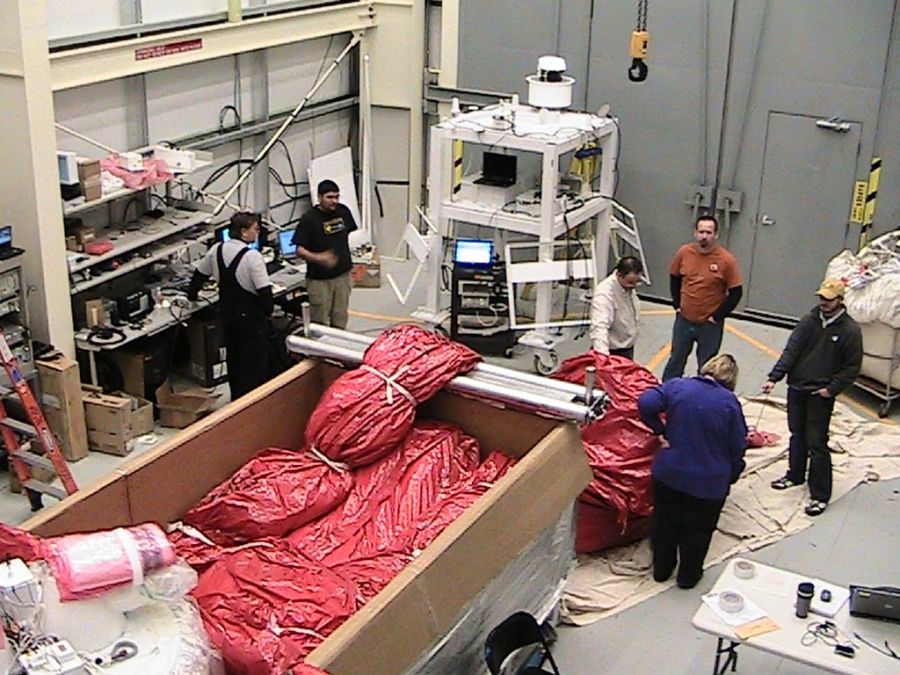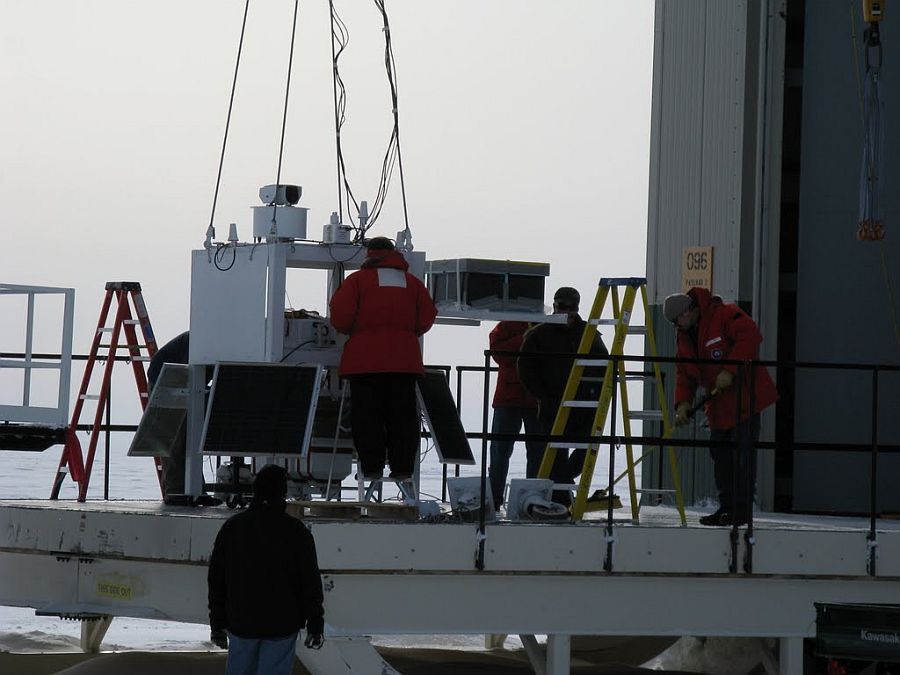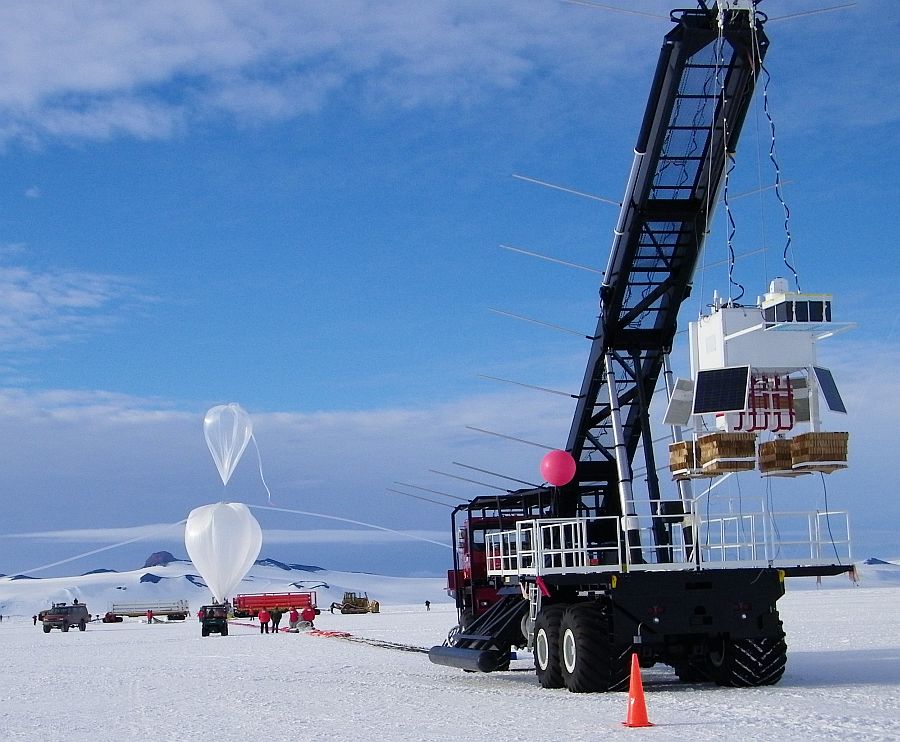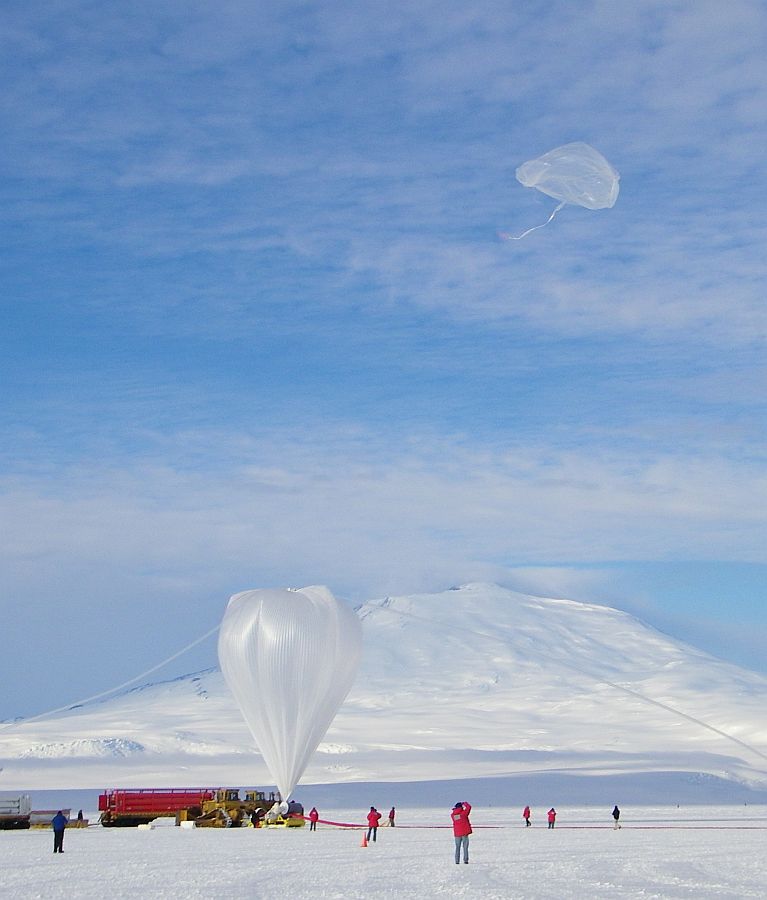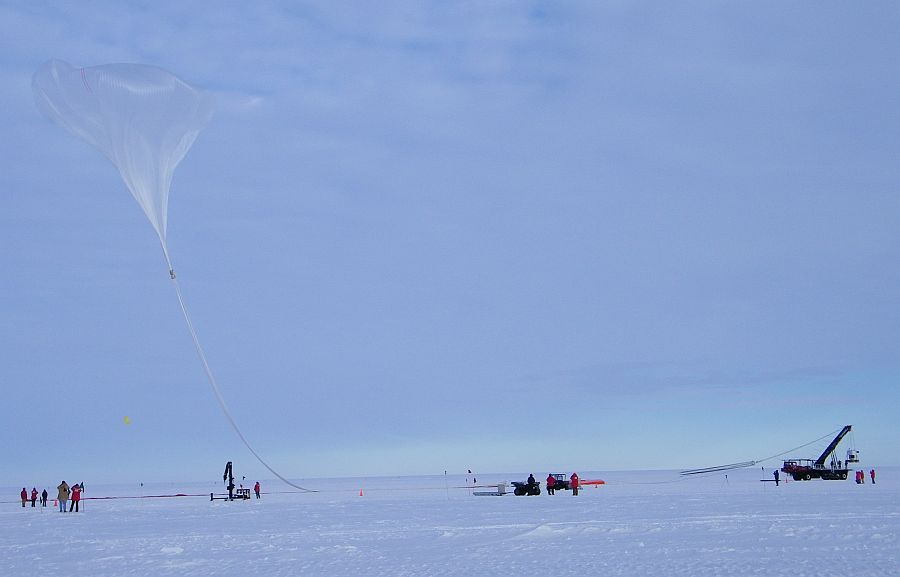Purpose of the flight and payload description
A project to develope a balloon system capable of providing scientific measurements for 100-day missions with floating altitude close to 35km transporting payloads of near 1.5 tons.
It is a super-pressure balloon made of a composite fabric (polyester + polyethylene film and fabric) that is filled with Helium and hermetically sealed. Meridional tendons provide additional rigidity to the envelope. The pressure inside the envelop is maintained above the ambient pressure at all times to keep the balloon afloat at a constant altitude. During daytime the internal pressure increases due to solar heating but the volume remains constant due to the rigidity of the envelope. At night the pressure drops due to infrared radiative cooling to space, but as long as the internal pressure remains above the ambient pressure, the balloon stays at the same altitude.
On the future, transported by stratospheric winds around the globe at 30m/s the ULDB would be make a full circunnavegation to Earth in about 2 weeks.
Details of the balloon flight
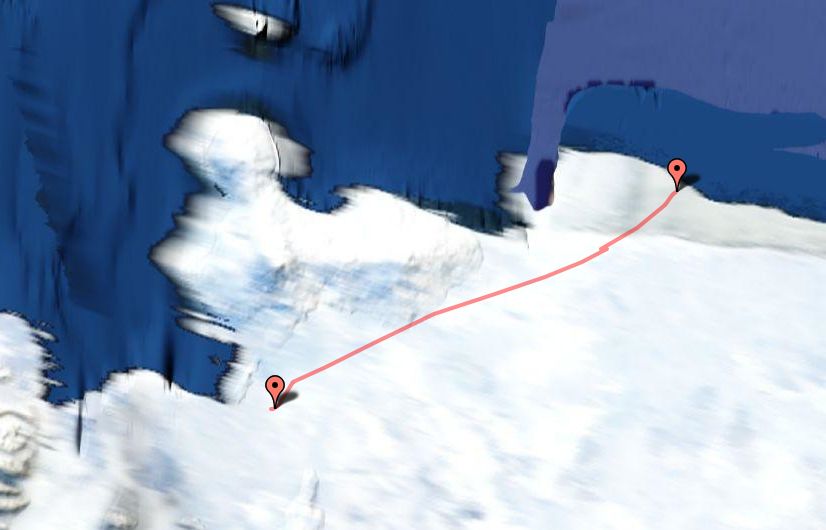
Balloon launched on: 12/10/2009 at 10:21 utc
Launch site: Williams Field, McMurdo Station, Antarctica
Balloon launched by: Columbia Scientific Balloon Facility (CSBF)
Balloon manufacturer/size/composition: Ultra Long Duration Balloon Raven - 14.000.000 cuft
Flight identification number: 608NT
End of flight (L for landing time, W for last contact, otherwise termination time): 12/10/2009 at 13:04 utc
Balloon flight duration (F: time at float only, otherwise total flight time in d:days / h:hours or m:minutes - ): 3 h
After several cancelled attempts to launch it, the balloon was finally prepared on site in the morning (UTC time) of December 10, 2009.
The inflation was done using an auxiliary balloon which pulled the main balloon up while being inflated to avoid any wrinkle or damage to the fabric.
The balloon was released under an overcast sky at 10:21 utc, but at 13:04 utc when reached 108.000 ft and while it was ascending to float altitude, it burst due to unknown reasons.
As occured with the previous failed flight of the same model of balloon in June from Esrange, still no official news were issued by NASA about the nature of the failure.
No scientific data obtained due to the failure of the balloon
External references
- ULDB website - Balloon Programe Office NASA Wallops flight facility
- News about the ULDB failure at Wallops flight facility website (no longer available - stored at Archive.Org)
4616If you consider this website interesting or useful, you can help me to keep it up and running with a small donation to cover the operational costs. Just the equivalent of the price of a cup of coffee helps a lot.

